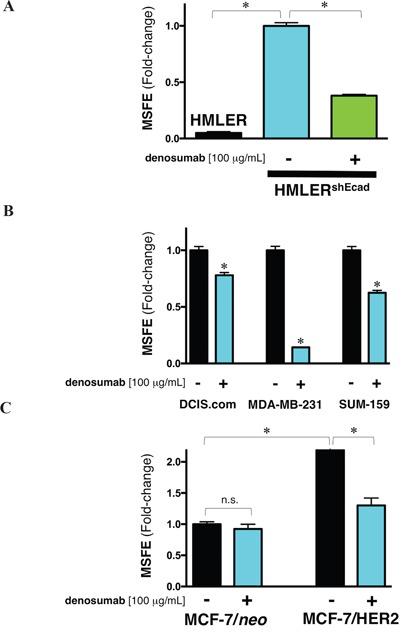Figure 3. (A) Denosumab reduces the EMT-driven tumorsphere formation ability of RAS-transformed human breast epithelial cells.

Mammosphere-forming efficiency (MSFE) of HMLER and HMLERshEcad cells in the absence or presence of 100 μg/mL denosumab was calculated after 7 days and expressed as a percentage (mean ± SD); three technical replicates per n; n = 2 biological replicates. The MSFE of vehicle-alone HMLERshECad control cells was normalized to one. Re-feeding of mammospheres cultures with denosumab and/or sphere medium was performed on day 4. *p<0.05. (B) Denosumab reduces mammosphere formation in basal-like and claudin-low triple negative breast cancer cells. Mammosphere-forming efficiency (MSFE) of MCF10DCIS.com (left), MDA-MB-231 (middle), and SUM-159 (right) cells in the absence or presence of 100 μg/mL denosumab was calculated after 7 days and expressed as a percentage (mean ± SD); three technical replicates per n; n = 2 biological replicates. The MSFE of vehicle-alone control cells was normalized to one in each model. Re-feeding of mammospheres cultures with denosumab and/or sphere medium was performed on day 4. *p<0.05. (C) Denosumab reduces HER2-driven augmentation of mammosphere-initiating CSC-like cells in luminal breast cancer cells. Mammosphere-forming efficiency (MSFE) of the HER2-negative (MCF-7/neo) and HER2-overexpressing (MCF-7/HER2) isogenic cell pair in the absence or presence of 100 μg/mL denosumab was calculated after 7 days and expressed as a percentage (mean ± SD); three technical replicates per n; n = 2 biological replicates. The MSFE of vehicle-alone HER2-negative MCF-7 cells was normalized to one. Re-feeding of mammospheres cultures with denosumab and/or sphere medium was performed on day 4. *p<0.05.
